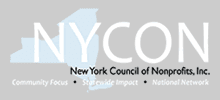Partnering for Financial Success set for Wednesday, November 9th!
Panelist Questions:
Questions about partnership and mergers in the area of Budget/Finance.
1) During a partnership or merger does the more profitable entity become the dominate player making all the decisions?
2) Procurement from each other in the area of products and services is a way to generate savings and revenue for each other. How is that being operationalized by each entity?
3) What impact on each of the partner's budget would a merger have and what are the steps you follow to get the finances of two organizations merged?
4) Was there anything required of you by your funders and or contracts/grants in order to merge?
5) Are funders more supportive of an application from a strong partnership pairing or a merged entity?
Questions about partnership and mergers in the area of Staffing.
1) How do you determine who stays, goes and what role each person plays? When are these decisions made and how do you handle the potential fallout or impact?
Questions about partnership and mergers in the area of the Board.
1) Do both Boards automatically merge into the surviving organization, or how do you handle board consolidation?
Question(s) about partnership and mergers in the area of Facilities.
1) Who is responsible for any post merger facility costs?
Question(s) about partnership and mergers in the area of Fund Development (fundraising).
1) If a donor believes in an organization and that organization merges or forms a partnership with another organization, what are the chances of losing that donor? How do you keep them?
Question(s) about partnership and mergers in the area of Identity.
1) During a merger or partnership, do you create a new identity?
2) What are strategies for conveying merger as a healthy step forward (as opposed to big fish consuming little fish)?
3) Can one organization really be everything for everyone, or is there evidence to support the benefits of remaining unique organizations to continue to provide service to the field?
Question(s) about partnership and mergers in regards to the Big Picture.
1) How do you discuss merger with your competitors?
2) During a merger or partnership, can two nonprofits have different visions? Can you blend organizations with different missions?
What evaluation tools do you have that measure the community impact of your partnership, collaboration, or merger?
Continuing this year's theme of Planning and Partnership for Financial Success, the Group will be holding their next meeting, titled Partnering for Financial Success, on Wednesday, November 9th and focusing on partnerships and mergers. This program will build on previous programs and examine different types of partnerships. The program will feature a panel made up of organizations that have successfully partnered in four ways: merger, coalition, outsourcing and shared services and facility, and regionalization. Our confirmed panelists at this time are:
Moderator: John Zogby, Chairman of the Board and Chief Insights Officer of IBOPE Zogby InternationalMerger: Center for Family Life and Recovery (Cassandra Sheets, Executive Director) and Child Care Council of Cooperative Extension (Lorraine Kinney-Kitchen, Executive Director)
New Addition: Doug Saur, CEO of New York Council of Nonprofits
Coalition: Literacy Coalition Collaberation (Kathleen Rinaldo, Director Adult and Continuing Education)
Outsourcing/Shared Facility or Services: Parkway Senior Center (Kathy Walters, Executive Director)
Regionalization: Planned Parenthood Mohawk Hudson (Margaret Roberts, CEO)
Date: Wednesday, November 9th
Time: 9:00am-12:00pm
Hosted By:
Jewish Community Federation of the Mohawk ValleyLocation: 2310 Oneida Street, Utica, NY 13501
Cost: FREE
Click Here to Register!













